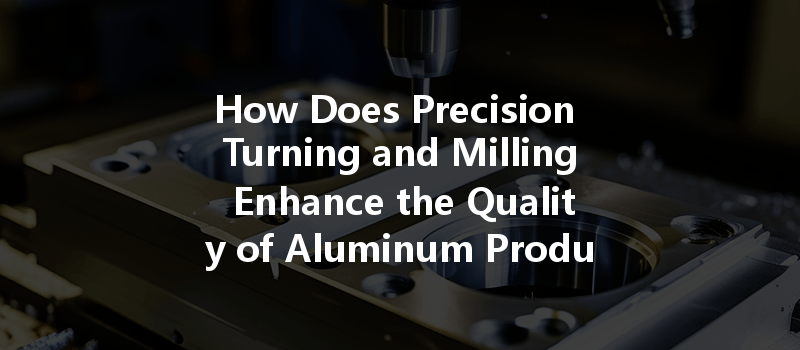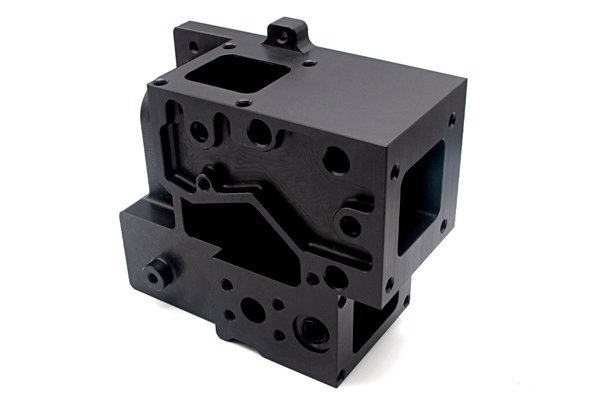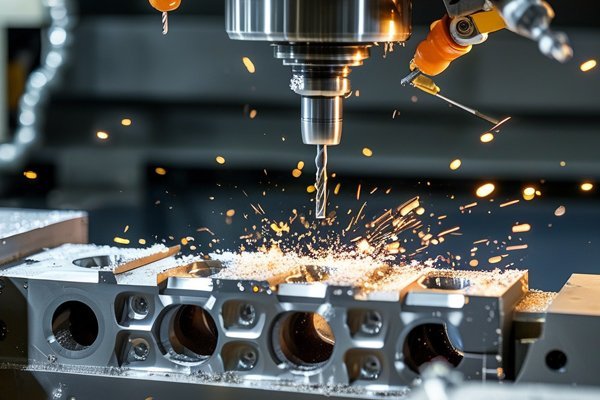Did you know that automation in manufacturing has increased productivity in the aluminum industry by close to 30% over the last decade? That’s a staggering figure, especially considering the pivotal role aluminum plays in everything from transport to consumer electronics. At the heart of this efficiency revolution lies the precision machining processes of turning and milling, which not only improve yield but also significantly enhance the product quality. But, what exactly does precision turning and milling entail, and how do they contribute to superior aluminum products? Let’s dive deep into this advanced topic.
Understanding Precision Turning and Milling
What Are Precision Turning and Milling?
Precision turning is a subtractive machining process where material is removed from a rotating workpiece. This method is particularly effective for creating cylindrical shapes and features. On the other hand, precision milling involves a cutting tool that rotates and moves across the workpiece in multiple dimensions. It is adept for producing complex shapes, slots, and various surface finishes. Both techniques rely on Computer Numerical Control (CNC) technology, ensuring that every cut is made to exact specifications.
The Importance of Precision Engineering
Precision engineering is vital across multiple industries, from aerospace to medical devices. In statistics for the manufacturing sector, more than 80% of engineers agree that precision machining is critical for operational success. This is mainly because the tighter tolerances achieved through such processes can lead to better-fitting components, enhanced performance, and reduced waste.
The Advantages of Precision Turning and Milling for Aluminum Products
Aluminum, an extremely versatile metal, can be shaped into complex geometries with high precision. By employing CNC technology in both turning and milling, teams can produce parts within micrometric tolerances. For instance, if you’re developing a component for an aircraft, where even a slight error can be catastrophic, these precision techniques ensure that each part is built with the utmost accuracy.
The quality of a component’s surface finish is crucial for both aesthetic appeal and functionality. Precision turning and milling can achieve a range of finish specifications from rough to smooth. This is particularly important in the automotive and aerospace industries where aerodynamic properties and friction characteristics play a significant role. The smooth surface finish achieved through these processes can help reduce drag and enhance performance efficiency.
In today’s fast-paced manufacturing environment, the ability to produce high volumes without compromising quality is paramount. CNC machines used in precision turning and milling can operate continuously, leading to a dramatic increase in throughput. Moreover, the automation technology involved reduces human error and allows for seamless scaling up of production.
Aluminum is lightweight yet structurally strong, making it a preferred choice in various applications. However, the cost of aluminum can be significant, especially in large projects. Precision machining minimizes material waste through optimized cutting paths and techniques, thereby ensuring a more sustainable manufacturing approach.
Precision machining can handle different aluminum grades, from 6061 to 7075, each suited for distinct applications ranging from aerospace components to modern consumer products. This versatility allows manufacturers to adapt their machinery in line with specific project requirements or material characteristics, keeping their operations flexible and efficient.
Challenges in Precision Turning and Milling
Despite the benefits, precision turning and milling involve certain challenges that manufacturers must navigate:
High demand for precision means that tools endure significant wear over time. Manufacturers must implement regular maintenance schedules and use quality materials to ensure tools remain sharp. This extends productivity and prevents errors due to worn-out cutting edges.
Even slight misalignments can lead to inaccuracies in the final product. Continuous calibration and monitoring of machinery are essential, as is investing in high-quality CNC setups.
While CNC machines provide numerous advantages, they often require substantial upfront investments. Additionally, operators need specialized training to effectively utilize these machines to their full potential.

With increased globalization, competition within the precision machining industry is fierce. Companies must continually innovate and improve efficiencies to maintain competitive advantages.
Future Trends in Precision Turning and Milling
The future of precision machining is undeniably tied to automation and artificial intelligence. Machine learning algorithms can analyze production data in real time, making adjustments to machining parameters for enhanced outcomes.
The integration of IoT technology allows for a comprehensive data collection system. Manufacturers can track equipment performance, identify bottlenecks, and optimize workflows, further enhancing production efficiency.
As the push for sustainability grows, precision machining is likely to evolve with practices that minimize waste and energy consumption. This will not only mitigate environmental impacts but also lower operational costs, benefiting both the ecosystem and the bottom line.
Techniques for Quality Enhancement in Precision Turning and Milling
The type of cutting tool used is a pivotal element in machining success. Selecting the right tool for various aluminum alloys can significantly affect surface finish and operational efficiency. Carbide-coated, high-speed steel, or coated tools are often recommended for aluminum.
Variables such as cutting speed, feed rate, and depth of cut play critical roles in precision turning and milling. Optimal settings prevent overheating and extend tool life while ensuring quality output.
Effective cooling methods can reduce friction during machining, improving both efficiency and finish quality. Water-soluble oils or synthetic coolants are often employed to provide effective cooling and lubrication for cutting tools and workpieces.
Regular checks using quality control tools such as coordinate measuring machines (CMM) can prevent defects from reaching the final stages of production. Implementing Statistical Process Control (SPC) ensures that variations in processes are monitored and corrected proactively.
Keeping staff updated with the latest CNC technologies and machining techniques ensures that operations remain at the forefront of industry standards. In-house workshops, external courses, and industry conferences provide valuable knowledge resources.
Precision turning and milling are far more than just methods of shaping aluminum; they are integral to achieving high-quality products across numerous sectors. From enhancing accuracy and surface finish to promoting efficient material use, the advantages of these techniques can’t be overstated. The challenges associated with these advanced manufacturing processes can be navigated through meticulous planning, investment in technology, and a dedication to quality control.
As we move towards a more automated and data-driven future, the importance of these processes will only grow. For manufacturers looking to remain competitive, investing in precision turning and milling, alongside the continuous enhancement of techniques, is not only a recommendation—it’s a necessity.
Reflecting on your own production needs, consider how adopting precision machining strategies can transform your output and solidify your standing within the industry. In an era where quality defines success, turning and milling enhance the excellence of aluminum products—an indispensable aspect of modern manufacturing worth serious contemplation.






